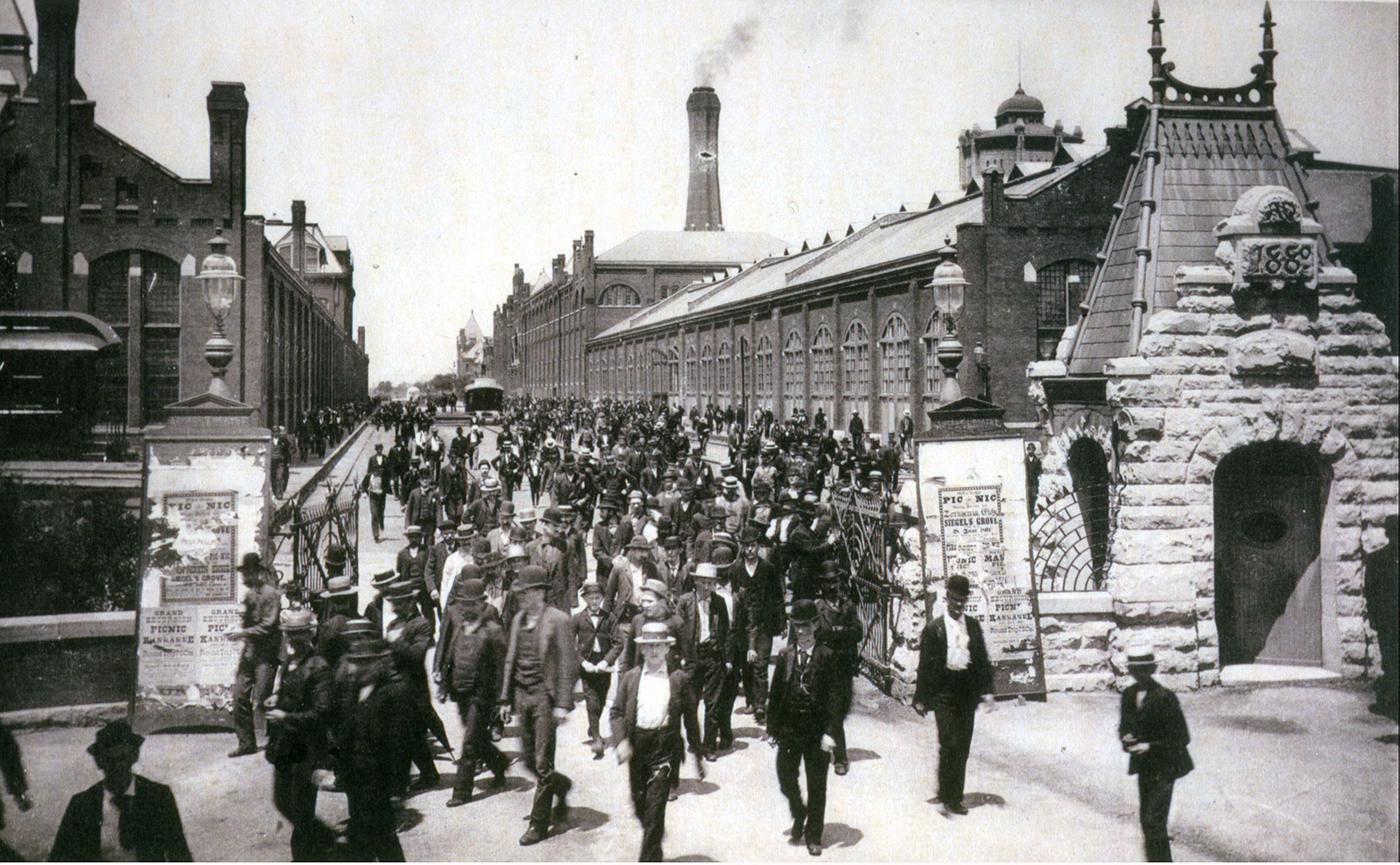This weekend many families will be gathering to spend the Labor Day weekend together, grilling, golfing, and attending local parades. After a long summer, many people look forward to this 3-day weekend as it is sometimes the last time families get to vacation before school starts. However, the history of how this day came to has impacted our work-life relationship so immensely, many people may not even realize to what extent.
In the 19th century, the working conditions were beginning to become unbearable both physically and financially. The main cause of this boom in employment was the beginning of the Industrial Revolution and the large number of immigrants coming to America. Cleanliness was the first to go in homes due to overcrowding of the cities, poor sanitation, diseases, and the growing pollution from factories. Along with the physical burdens, finances were becoming not only a burden, but impossible to manage due to lack of. The average income of an urban worker was between $400-500 a YEAR. Even worse, for families with children, roughly 20% of that income was coming from the children working. The financial burden was so great that in 1900, children under the age of 16 accounted for 18% of America’s workforce. Factories employed many children due to them working for wages 10-20% less than their adult counterparts for the same amount of work. Children were also easier to control and more accepting of punishment. Also, due to them being much smaller, they were able to fit into machinery or crawl spaces that adults couldn’t, making them more useful, yet being in placed in extremely dangerous situations. Many children lost fingers, hands, feet, and sometimes their life for working with the machinery or simply by being near it.
On average, adults and children would work 12-16 hours a day for low wages that would barely cover a Happy Meal today. Workers started getting fed up with the conditions and poor wages, thus protests began to occur. Many of the United States largest strikes are due to the treatment of companies and their employees, one of them being the 1886 Haymarket Riot. This riot occurred after an unknown attack on police when an estimated 2,000 workers and activists from McCormick Reaper Works were protesting worker treatment and compensation. Allegedly, police opened fire on the workers causing an uproar. A bomb was then thrown from the crowd at the police, killing 8 officers and several workers nearby. This set off an arrest frenzy ending with 8 men in handcuffs. Although there is no evidence of any of these men having thrown the bomb, 7 of them received death sentences and 1 received 15 years in prison. Out of the 7, four of them were hanged, one committed suicide the day before his execution, and the last 2 were changed to life sentences. It is still unknown to this day who threw the bomb, and due to the incredible lack of evidence, the last surviving 3 men were pardoned in 1893.

However, the following year was the riot that would ignite change in our country’s workforce. In 1894, 250,000 workers at the Pullman Palace Car Company walked off the job in strike of their working conditions. They worked 16-hour days and wages so low that families were suffering from starvation. A group approached George M. Pullman, the company president, to address these issues; however, instead of solving the issues, Pullman fired the workers. Due to this absurd disrespect, workers not only walked off the job and shut the place down, but the entire country faced repercussions. The American Railway Union backed those who walked, and Eugene V. Debs, ARU President, initiated a boycott and refused to deal with Pullman any longer until their employee treatment improved. The boycott proved successful as within one week (June 22 to June 29), another 125,000 workers across 29 railroads quit working. However, the workers were not happy for long without pay.
Workers began taking matters into their own hands after Debs was no longer allowed to communicate with them about remaining calm and not reacting with violence. President Cleveland then treated the situation as a federal issue and dispatched troops to Chicago on July 3rd. Although the troops were meant to keep the peace of the city, it became evident the workers were not pleased to see federal officers. The next day, workers destroyed around 6,000 railroad cars and constructed barricades to prevent the troops from entering the train yards. The total enforcement equated to 6,000 federal and state troops, 3,100 police, and 5,000 deputy marshals in the city, but that still wasn’t enough to contain the workers rage. A riot ensued leaving roughly 30 workers dead, and attention from the federal government on workplace environments and treatment of employees. By the beginning of August, Pullman opened its doors again and provided jobs to those who walked with one condition – never join a union. Overall, the company itself lost millions in revenue, and workers lost a total of $1 million in wages.
The first Labor Day was celebrated in New York City on September 5th, 1882 where 10,000 took unpaid time to march through the city making it America’s first Labor Day parade. Every year, this parade would occur and eventually the tradition grew in popularity. By 1885 and 1886, multiple municipal ordinances were being passed to create standards for better working environments and wages. It was the idea of 1 of 2 men to create a day for laborers. Peter J. McGuire was the general secretary of the Brotherhood of Carpenters and Joiners, as well as the co-founder of the American Federation of Labor. It is said that he wanted to dedicate a ‘general holiday for the laboring classes to honor those who from rude nature have delved and carved all the grandeur we behold’. However, it’s argued that it was Matthew Maguire who came up with the idea for this holiday. Maguire was the secretary of Local 344 of the International Association of Machinists in Paterson, New Jersey. It isn’t determined who came up with the idea of a holiday, but many still debate its creator. New York was the first state to introduce a bill for Labor Day, however, Oregon was the first state to pass the bill recognizing Labor Day officially on February 21st, 1887. By 1894, 31 more states followed suit and the federal government officially declared Labor Day a federal holiday on June 24th, 1894.
Labor Day is always on a Monday to allow workers a 3-day weekend and is also part of the Uniform Monday Holiday Act of 1968! This holiday is not only about spending time with your family, but also acknowledging our ancestors fighting for fair treatment at work that affects us to this day! Without them, we could all still be working 16-hour days for minimal pay and poor working conditions. We hope you enjoy this long weekend and have an amazing time with your friends and family! If you liked this blog, share it with your family and friends via the icons below or leave us a comment!
Share this Post

